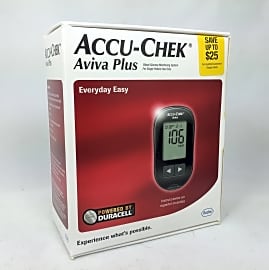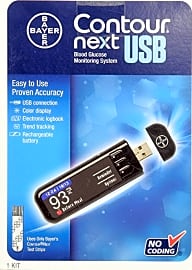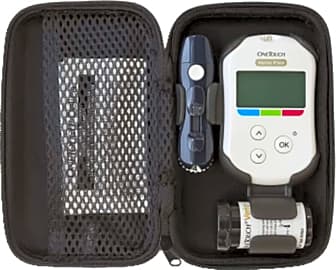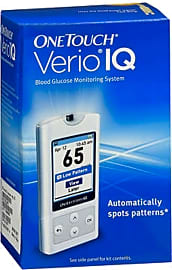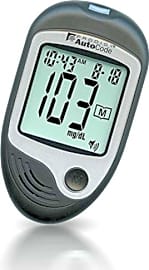The 8 Best Glucometers

This wiki has been updated 40 times since it was first published in February of 2016. Monitoring blood glucose levels used to be very difficult, but these compact digital glucose meters make keeping track of your numbers a lot simpler and less stressful. They require a minimal amount of blood and return results in seconds. However, it is important that you consult with your doctor before choosing a monitor to ensure you understand the limitations of these devices. When users buy our independently chosen editorial selections, we may earn commissions to help fund the Wiki.
Editor's Notes
November 13, 2020:
Because of how important these devices are for diabetics, we spent a lot of time parsing through research on the various testing machines to determine if they could be relied on for accurate results. What we found, to our extreme dismay, is that in actual usage many of the models currently available don't meet the required accuracy needed to be cleared by the FDA, which begs the question of why they were ever approved in the first place. That complaint aside, we have whittled the options down to a few devices that we feel can be trusted. However, you should still check with your doctor before using any medical device that plays a vital role in your wellbeing.
One of the studies we relied on was performed by the Diabetes Technology Society Blood Glucose Monitor System Surveillance Program. Except for the OneTouch Verio Flex, OneTouch Verio IQ, and Prodigy Autocode, which passed two, every other model on this list passed all three of their tests and earned their seal of approval. The reason we still included the OneTouch Verio Flex, OneTouch Verio IQ, and Prodigy Autocode is because they offer features that aren't often found on other devices, and which we think can be useful for people. For example, the OneTouch Verio Flex is Bluetooth equipped and syncs with an associated smartphone application that not only tracks your history, but allows you to share readings with others, set personalized goals, and more. The OneTouch Verio IQ can automatically spot trends for you, making it just a bit easier to track how your blood sugar fluctuates over time so you can make changes if necessary, and the Prodigy Autocode provides a verbal readout of results for vision impaired individuals.
The Bayer Contour Next One Bluetooth is also Bluetooth enabled and has an associated app that offers many of the same features found on the OneTouch app. However, this model has two notable benefits over the Verio Flex. First, it is more accurate, and second, it is more affordable.
While lacking some of the high-tech features you would get with a Bluetooth-equipped option, the FreeStyle Lite requires the least amount of blood of any model accurate enough to rely on, making it ideal for those who have trouble squeezing out more than a drop or two from heavily calloused fingers.
November 25, 2019:
Keeping track of glucose is very important for diabetics. Keeping your blood sugar in the target range helps not only prevent short-term emergencies, but it also reduces the chances of experiencing long-term complications. Because of how vital it is to keep close tabs on your glucose levels, we did extensive research into these devices before recommending any of them. What we found is that the majority of the commercially-available devices suffer from accuracy issues, which can be very dangerous. The only models that made our list are ones that have been tested by independent third parties and have been found to conform to the FDA's recommended accuracy guidelines. That being said, we cannot guarantee the accuracy of any of these glucometers, which is why you must consult with your doctor before choosing a model to determine if it is right for your needs.
In addition to accuracy, another thing we looked at is how much blood is required for an accurate test. And based on that, the FreeStyle Lite scores very high marks. While most of the other models we recommended need 0.6 µL, which is already a small amount, the FreeStyle Lite only needs 0.3 µL. Since diabetics tend to build up callouses on their fingertips that makes it difficult to draw a lot of blood, this can save you from a lot of extra pin pricks.
We also think the Bayer Contour Next One Bluetooth can be very beneficial to diabetics since it makes tracking long-term trends easier. Using the associated app, you can track your average levels over time, tag results with pictures and notes, set testing reminders, and more. The Bayer Contour Next USB also offers similar benefits for long-term trend tracking, but since it connects to a PC rather than a smartphone via Bluetooth, it lacks the functionality of the app.
Special Honors
Freestyle Libre Many will find the Freestyle Libre to be the most convenient testing device they have ever had. It relies on small sensor that adheres to your body and which allows you to check your levels at any time, without requiring you to prick your finger or any other part of your body with a needle. However, it doesn't offer the best accuracy so you should always keep a traditional meter on hand, just in case. freestylelibre.us
How Important Is A Good Glucometer?
All of this is to say that there is a good degree of fluctuation between someone's test results and what their actual blood sugar level may be at that given time.
As a diabetic, monitoring blood sugar levels is key to keeping the body healthy. This often means regular visits to the doctor to check blood plasma glucose levels. More importantly, however, is how this applies to the daily life of a person with diabetes.
With the discovery of the oxygen electrode in the 1950s, new monitoring options became available to diabetic patients and their physicians. Starting in the early 1980s, personal blood glucometers were distributed, after they were found to help patients improve their glycemic control.
In 2019, the Food and Drug Administration (FDA) drafted new guidelines regarding the accuracy of glucometers. The newest rules require that a device return 95% or more of test results within +/- 15% discrepancy across the blood sugar measuring range, and within +/- 20% for 99% of tests. Despite that, glucose levels from personal glucometers can vary from the results of plasma tests at the doctor's office. This may be partially due to the fact that the FDA doesn't require independent testing to verify a manufacturer's claims of accuracy. Additionally, according to a third-party test of 18 commercially available machines, only six actually met those standards. All of this is to say that there is a good degree of fluctuation between someone's test results and what their actual blood sugar level may be at that given time. This is why many studies recommend that doctors monitor the use of personal glucometers at first; to ensure the accuracy of the results.
When personally dosing with insulin, the smallest range of inaccuracy possible is the only way to be certain you are not giving the body too much or too little insulin. Using a good glucometer is more than a matter of convenience for many; it is the only way for them to be certain that their blood sugar is not dangerously high or low.
Keeping Your Glucometer's Results Sharp
In addition to having a reliable machine, there are factors that a person can take to help increase the chances they are getting a correct reading. One of the most vital, and often overlooked, steps is to wash the hands before testing. The residue from a banana peel may not seem like much, but it can greatly affect the reading of a glucometer. If hand soap is not an option, alcohol-based sanitizers are a suitable alternative. Whichever method is utilized; it is just as important that the hands are completely dried before testing. Even small amounts of excess liquid can dilute the blood and generate a false reading.
The one you feel the most comfortable with can be your main unit, while the second one can act as a backup.
That said, many people encourage the use of the second drop of blood for the actual test. Even on a clean hand, the first drop may be contaminated with soap or alcohol; using the second drop of blood is much less likely to be contaminated.
It is also highly important to use a control solution with a glucometer. While many people use glucometers at home, there is a severe lack of education surrounding the use of control fluid. Studies have shown that as the education about personal glucose care increases, patients' glycemic control increases.
An additional step is to have two devices from different manufacturers. The one you feel the most comfortable with can be your main unit, while the second one can act as a backup. If you ever encounter a situation where you feel that your blood glucose is too high or low, but your main device isn't showing you that, or when your main device is returning surprisingly high or low results even though you feel normal, it can be beneficial to pull out your backup device and perform a second test before taking insulin or eating food. This can help ensure you are taking the proper steps to bring your blood sugar level back within the target range.
Are There Any Natural Diabetes Options Out There?
As awareness about the side effects of chemical medicines on the body rises, so does the inclination for patients to choose natural remedies for diabetes symptoms. So, which are the best natural options for diabetes control?
At the head of the natural medicinal race are various essential oils. As extracts of medicinal plants, essential oils can help provide safe and natural remedies to diabetes patients. The high content of bioactive compounds in essential oils are readily absorbed through the nose or skin, and begin their action immediately.
This is important, as carbohydrates are broken down into glucose.
In a recent study, an extraction of coriander was found to help protect the cells of diabetic test subjects. It has been shown to reduce serum glucose and increase insulin release. Another important protective agent may be the simplest one out there: fiber. Fiber helps to slow the rate at which carbohydrates are broken down in the body. This is important, as carbohydrates are broken down into glucose. Adding high-fiber foods to the diet helps to keep glucose levels steady throughout the day.
Though traditionally used as medicine, science is just now catching up to the idea that herbs can also be natural remedies to diabetic ailments. According to a recent study, cinnamon lowers blood glucose. Green tea also shows promise in naturally reducing type 2 diabetes symptoms. The main antioxidant in green tea is EGCG, which is shown to improve insulin activity and glucose control in the body.
Foods rich in omega-3 oils are also amazing for people with diabetes. The oils improve circulation in the body, reducing the likelihood of blood clots, stroke, and heart disease. They do this without changing glucose or insulin activity like some medications. As people with diabetes are up to eight times more likely to have a stroke or heart attack in their life, including heart-healthy omega-3 oils from sources like fatty fish can be an amazing preventative measure.



